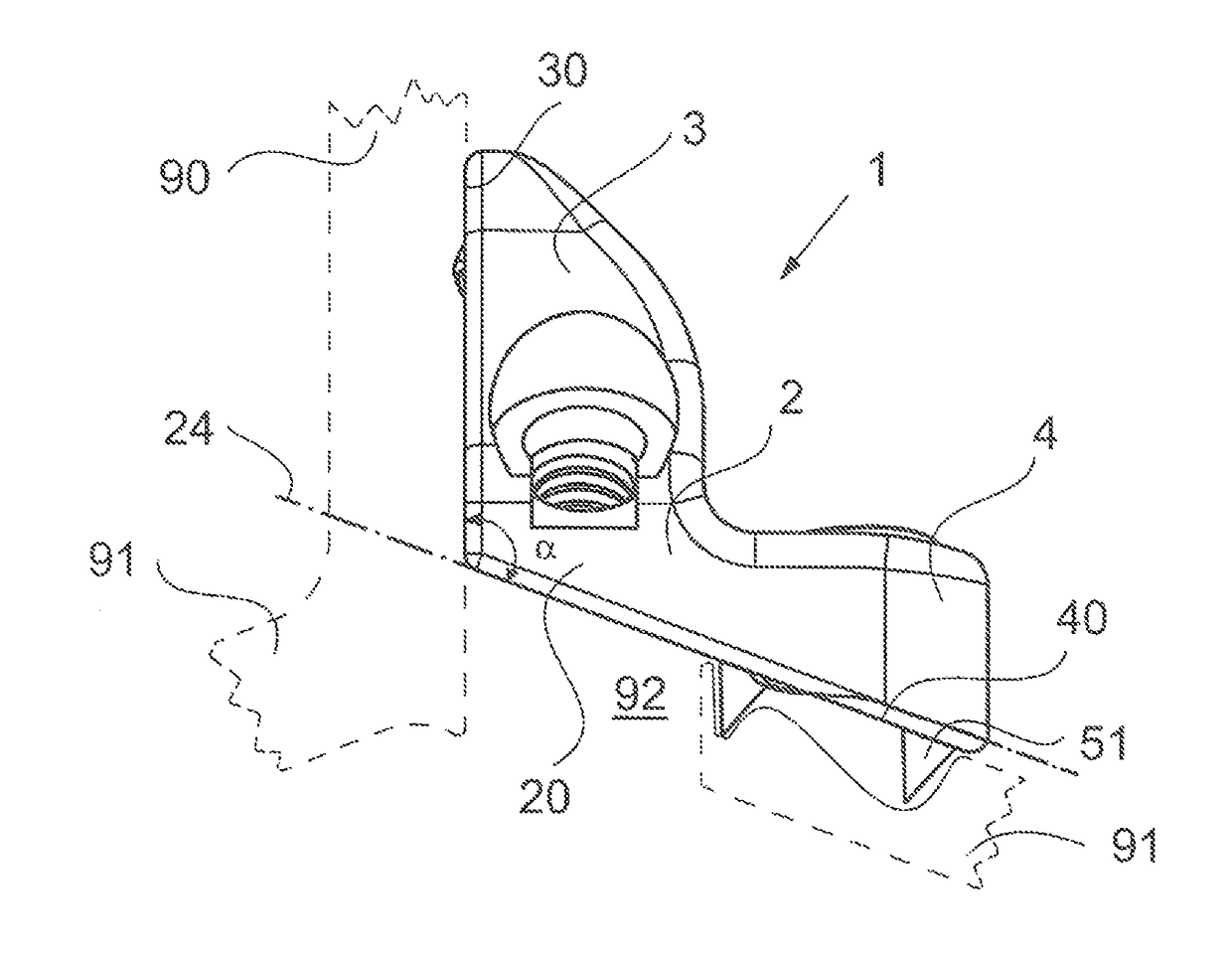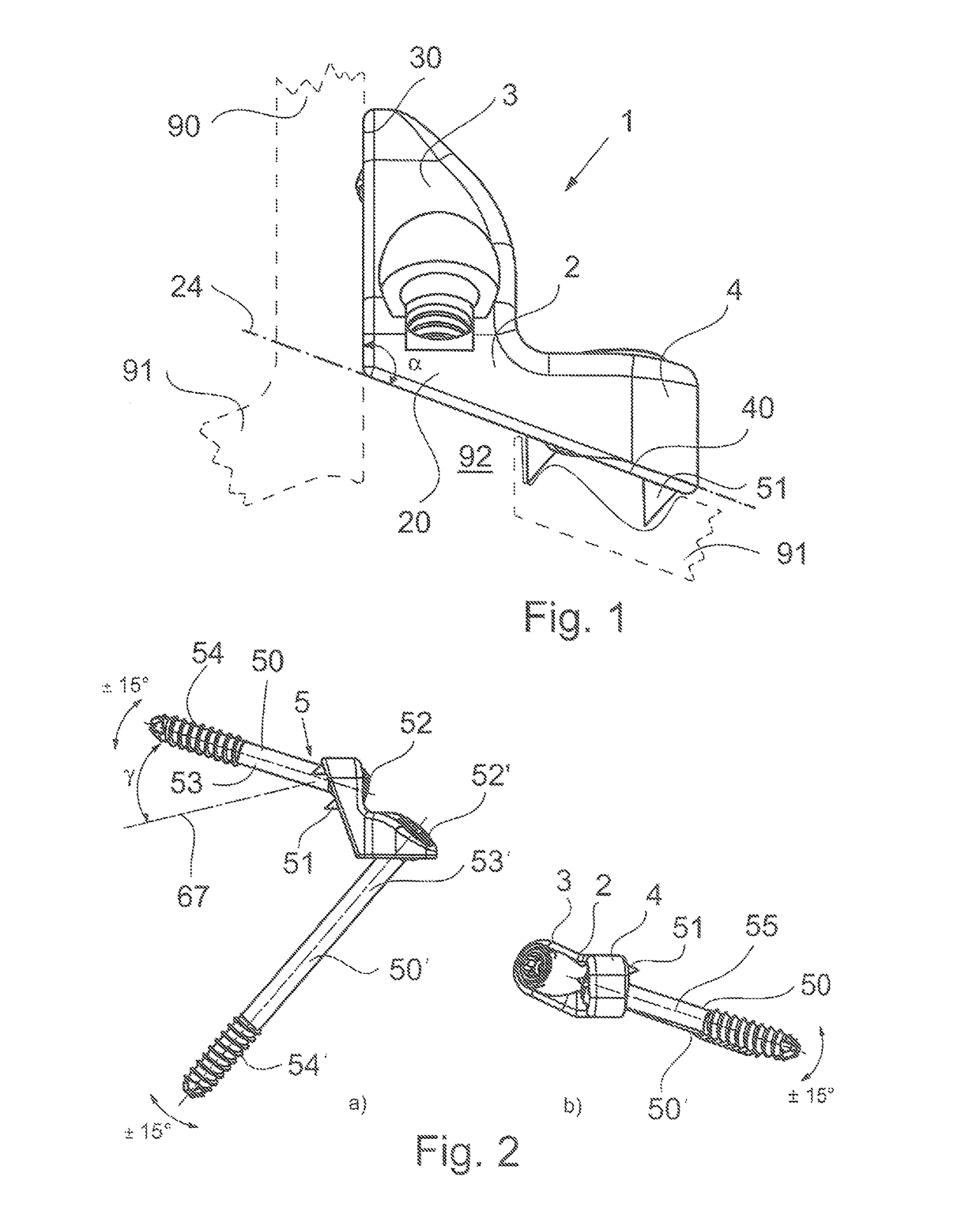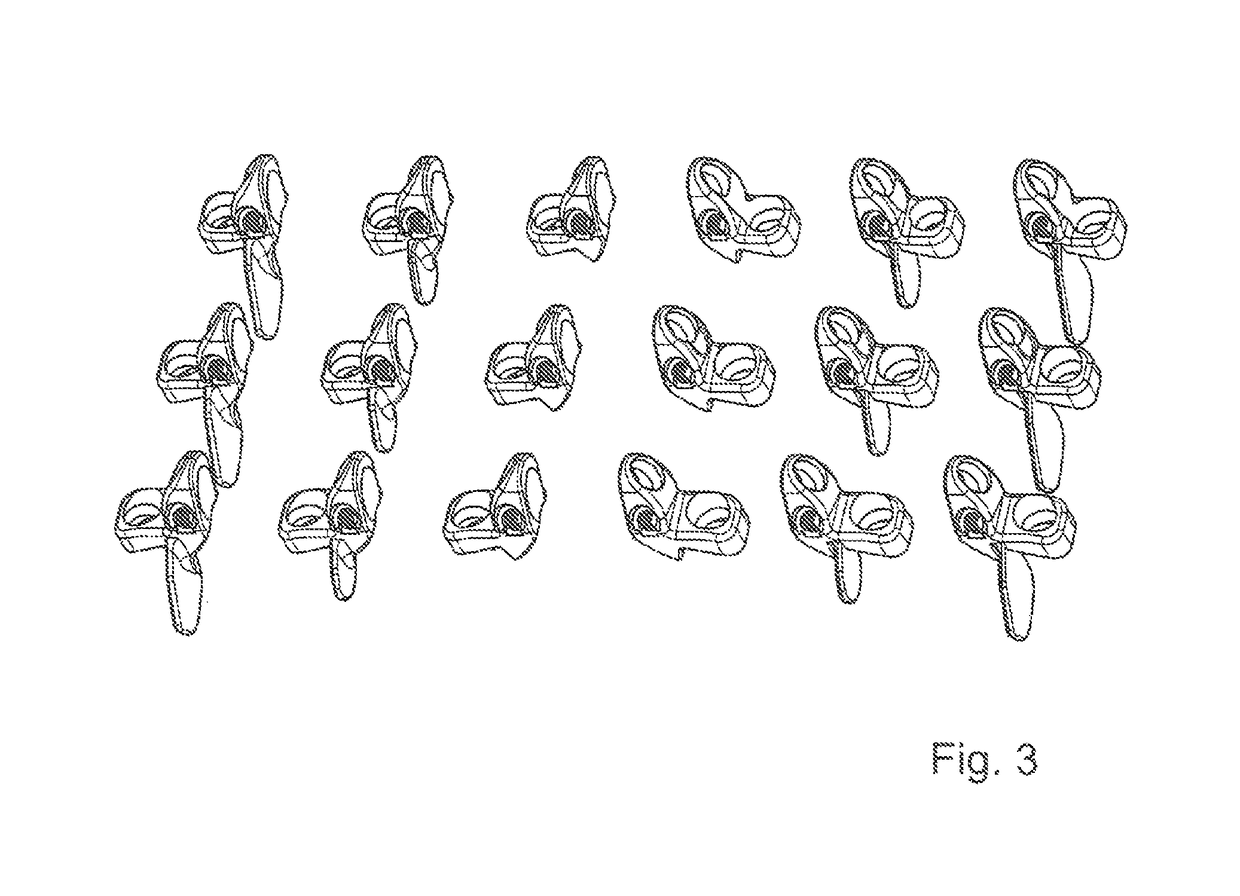Reinforcement implant for lamina with a cantilever bridge part
a technology of cantilever bridge and reinforcement implant, which is applied in the direction of spinal implants, fasteners, osteosynthesis devices, etc., can solve the problems of now unstressed bone degeneration, and achieve the effect of improving the reinforcement implant and avoiding these disadvantages
- Summary
- Abstract
- Description
- Claims
- Application Information
AI Technical Summary
Benefits of technology
Problems solved by technology
Method used
Image
Examples
Embodiment Construction
[0031]A first illustrative embodiment of a reinforcement implant according to the invention is shown in FIG. 1. It is designated in its entirety by reference number 1. It is substantially limb-shaped, with a first limb 3 and a second limb 4, which are connected to each other by a bridge part 2.
[0032]For a better understanding of the invention, there follows a detailed explanation of the structure of the vertebra and the nature of the interaction between the reinforcement implant and the vertebra. Reference is made in particular to FIGS. 6a to 6c. The vertebra 9 has a solid vertebral body 98 with two laterally protruding osseous projections 97 which, in their posterior region, are connected by an osseous arch. The osseous arch comprises a lamina 91 and, at the center thereof, a rearwardly extending projection (spinous process) 90. In the area of the transition into the lamina 91, upper and lower articular projections are arranged on each side and each form part of a facet joint 95, 9...
PUM
 Login to View More
Login to View More Abstract
Description
Claims
Application Information
 Login to View More
Login to View More - R&D
- Intellectual Property
- Life Sciences
- Materials
- Tech Scout
- Unparalleled Data Quality
- Higher Quality Content
- 60% Fewer Hallucinations
Browse by: Latest US Patents, China's latest patents, Technical Efficacy Thesaurus, Application Domain, Technology Topic, Popular Technical Reports.
© 2025 PatSnap. All rights reserved.Legal|Privacy policy|Modern Slavery Act Transparency Statement|Sitemap|About US| Contact US: help@patsnap.com



